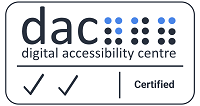Frequently Asked Questions (FAQ)
Table of contents
- How often will new data be added to this site?
- How do I suggest new or different data sources?
- What are you doing to fill data gaps?
- What does the reporting status mean?
- What does the disaggregation status mean?
- What disaggregations are available?
- Who uses this website?
- Can other countries copy this website?
- How accessible is this website?
- What browsers can I use to view this website?
- What do each of the three tiers mean?
How often will new data be added to this site?
We will add data as soon as it has been sourced and checked. This includes new data as well as updates to data we have already published. We will continue to collect data from existing sources where possible, in cooperation with topic experts.
How do I suggest new or different data sources?
If you have feedback on the data sources we have used or have suggestions for new data sources then please contact us
What are you doing to fill data gaps?
For some indicators, although we may have data at the national level, our existing data sources don’t always allow us to disaggregate by all main groups.
This means we need to look for new data sources, link existing ones, or model data. We are working with colleagues across the Government Statistical Service to do this, including the Data Science Campus.
We had a consultation on measuring and reporting SDGs in the UK where we asked for your ideas on prioritising data development. Your feedback informed our data development plans.
What does the reporting status mean?
We have used two different types of reporting status for an indicator, which are also colour coded:
-
Reported online: As a minimum the headline national data for this indicator is available on this website but the data might not be fully disaggregated yet. We are continuing to source additional disaggregations
-
No data available: We are still looking for a suitable data source for this indicator
Where there is additional information about the status of indicator data collection and reporting, this will be displayed at the top of the indicator page.
What does the disaggregation status mean?
Many Sustainable Development Goals (SDG) indicators require specific breakdowns, or disaggregations, below the headline figure.
Initially our aim is to report the disaggregations which are listed within the title of the indicator. For example, indicator 8.5.2 specifies unemployment rate ‘…by sex, age and persons with disabilities’.
We show how much progress we have made on reporting these disaggregations on the ‘Disaggregation status’ tab of our Reporting Status page.
The different disaggregation statuses we use are:
-
Fully disaggregated: All disaggregations specified in the indicator title are reported
-
Partially disaggregated: Some of the disaggregations specified in the indicator title are reported
-
Not disaggregated: None of the disaggregations specified in the indicator title are reported
-
Out of scope: Indicators where no disaggregation is specified in the indicator title
What disaggregations are available?
We report many other disaggregations beyond the ones that are required, regardless of any reference in the indicator title.
For details about all disaggregations, see the UK disaggregation report.
Who uses this website?
An initial phase of user research has been carried out on the UK SDG data website. This research showed that the four main user types are:
-
concerned citizen
-
connected influencer
-
fact gatherer
-
involved analyst
For more information about these user personas and our user research, see our page which outlines the different user personas and their needs.
Can other countries copy this website?
Yes. See the Open SDG Quick Start guide for technical instructions on the quickest way to get a copy of the Open SDG platform up and running.
How accessible is this website?
Our aim is to make this website as accessible and usable as possible for every user. We have recently achieved the AA level standard of the Web Content Accessibility Guidelines (WCAG 2.1), with a Digital Accessibility Centre Certificate of Accreditation.

For details about compatibility with tools and known issues, please see our Accessibility statement.
What browsers can I use to view this website?
We are developing and testing our site in line with the Government Digital Service (GDS) guidance on designing for different browsers and devices. Our website works with most of the latest versions of the commonly used browsers listed in the ‘Browsers to test in’ section of the GDS guidance.
What do each of the three tiers mean?
Each of the SDG indicators are assigned to one (or more) of the following tiers:
-
Tier 1: Indicator is conceptually clear, has an internationally established methodology and standards are available, and data are regularly produced by countries for at least 50 per cent of countries and of the population in every region where the indicator is relevant
-
Tier 2: Indicator is conceptually clear, has an internationally established methodology and standards are available, but data are not regularly produced by countries
-
Tier 3: No internationally established methodology or standards are yet available for the indicator, but methodology/standards are being (or will be) developed or tested
For more information, see the IAEG-SDGs Tier Classification for Global SDG Indicators
For further questions about the UK SDG data site please contact us
Back to top